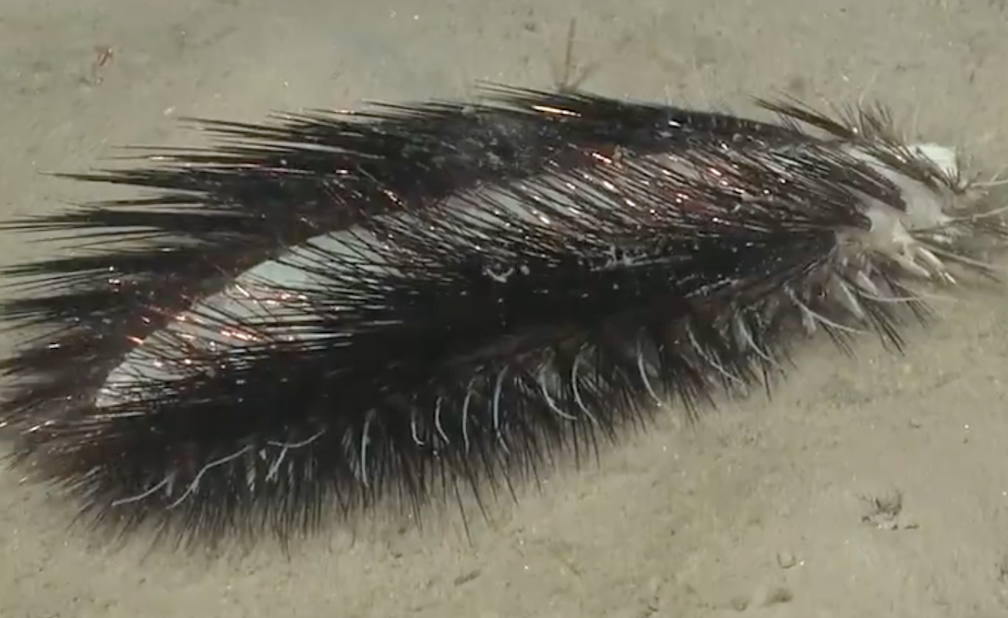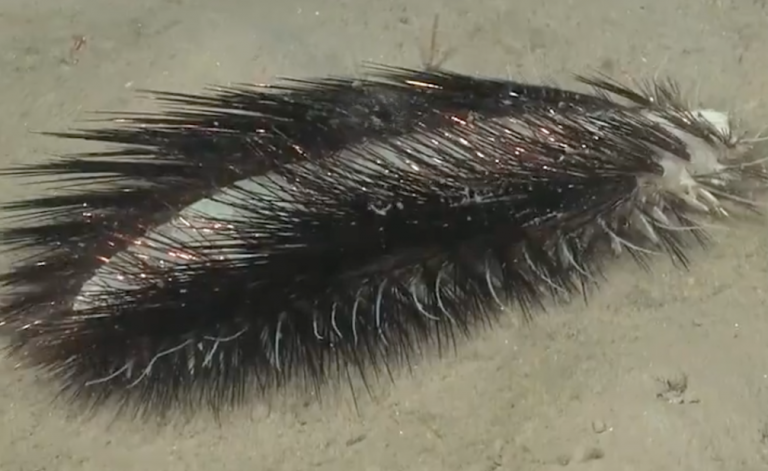
Astonishing life dwells in the deep sea.
An ongoing ocean expedition to a dynamic marine realm off the little-explored Chilean coast — with seeps and vents emitting nutrients into the water — has spotted a curious, almost alien-looking species. The mission, undertaken by the Schmidt Ocean Institute and its 7,055-pound robotic explorer ROV SuBastian, documented a shimmering species of polychaete crawling on the seafloor. It’s a psychedelic marine worm.
“Some polychaetes are bioluminescent; this sassy sparkler has protein structures in the bristles, making them iridescent,” the institute posted online.
You can see this slowly-moving creature’s sparkling bristles, or chaetae, in the video below.
Polychaetes are extremely diverse organisms.
“The visual variety among the more than 10,000 described species means a polychaete enthusiast is never bored,” Karen Osborn, the curator of Marine Invertebrates at the Smithsonian’s National Museum of Natural History, explains. “They come in every imaginable color and pattern, from completely transparent to iridescent to candy-striped. You can find polychaetes of every shape from spherical to sausage-shaped to pencil thin, and every size from microscopic to several feet long. Some are smooth and sleek, others frilly and elaborate.”
“They come in every imaginable color and pattern, from completely transparent to iridescent to candy striped.”
But they’re not just wild sights. “Polychaetes are critical members of all ocean food webs,” Osborn added. “Some are voracious, jawed predators; others are delicate filter feeders, scavengers, farmers, symbionts, or even bone-eaters. These sometimes beautiful, in many cases tiny, and often abundant animals play a crucial role in structuring and oxygenating the sea floor, much like their earthworm cousins on land.”
This ongoing mission, dubbed Chile Margin 2024, focuses on deep sea seeps — where gas from decomposing creatures escapes through the seafloor — allowing methane-munching microbes to flourish and establish alien ecosystems thousands of feet below the ocean surface. The researchers will also examine hydrothermal vents, found near the boundaries of Earth‘s tectonic plates, which emit hot, chemical-rich fluid into the ocean. These, too, often harbor rare marine communities.
Ocean research organizations are now vigilantly documenting and mapping the deep sea. Scientists want to shine a light — literally and figuratively — on what’s down there. The implications of knowing are incalculable, particularly as deep sea mineral prospectors prepare to run tank-like industrial equipment across parts of the seafloor. For example, research expeditions have found that ocean life carries great potential for novel medicines. “Systematic searches for new drugs have shown that marine invertebrates produce more antibiotic, anti-cancer, and anti-inflammatory substances than any group of terrestrial organisms,” notes the National Oceanic and Atmospheric Administration.


















0 Comments